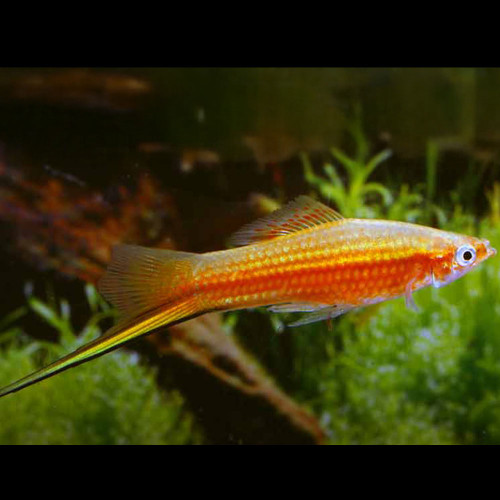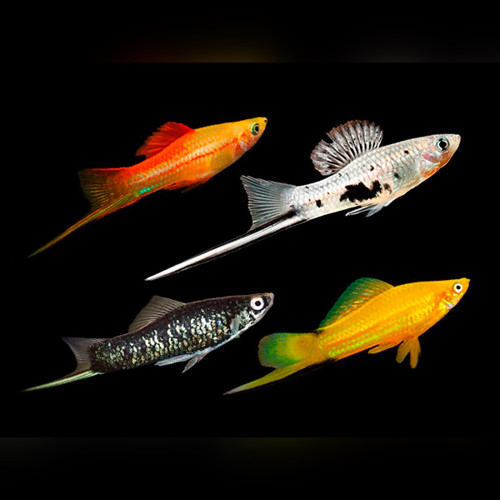Our Guide To Keeping Yucatan Swordtail Fish
-
About Fish Species:
- Scientific name: Xiphophorus hellerii
- Common name: Yucatan Swordtail
- Family: Poeciliidae
- Origin: Yucatán Peninsula, Mexico
- Adult length: 12 to 15 cm (males with extended sword)
- Lifespan: 3 to 5 years
- Diet: Omnivore
- Care Level: Easy
- Temperament: Generally peaceful, mildly territorial males
-
Tank Setup:
- Yucatan Swordtails thrive in large, well-oxygenated tanks with plenty of swimming room.
- A minimum tank size of 100L is recommended for a group, especially with multiple males.
- Provide a mix of open spaces and planted areas using species like Vallisneria, Hornwort, and Anubias for natural cover.
-
Water Parameters:
- Optimal pH range is 7.2 to 8.2 (slightly alkaline).
- Water temperature should be maintained between 24 to 28°C (75 to 82°F).
- Water hardness should be moderate to hard (12–25 dGH).
-
Filtration and Water Flow:
- Moderate water flow is ideal. Use a reliable filter that ensures good biological filtration and surface agitation.
- Yucatan Swordtails appreciate clean, well-filtered water with stable conditions.
-
Diet:
- They are omnivorous and benefit from a varied diet.
- Feed high-quality flakes or pellets as a staple food.
- Supplement with live or frozen foods like brine shrimp, daphnia, and bloodworms.
- Also offer vegetable matter such as blanched spinach, spirulina, or algae wafers.
-
Tank mates:
- Yucatan Swordtails are peaceful and suitable for community aquariums.
- Compatible tank mates include Platies, Mollies, Corydoras, Rasboras, and peaceful barbs.
- Male swordtails can be mildly aggressive toward each other, so ensure sufficient space and a higher female-to-male ratio (2–3 females per male).
-
Behavior and Compatibility:
- Yucatan Swordtails are active, surface-to-midwater swimmers and display courtship behavior when breeding.
- Males have elongated lower caudal fins ("swords") which they use for displays during mating rituals.
- They are livebearers and prolific breeders — consider separating fry if breeding is not desired.
- Provide visual barriers and plants to help reduce aggression between males.







